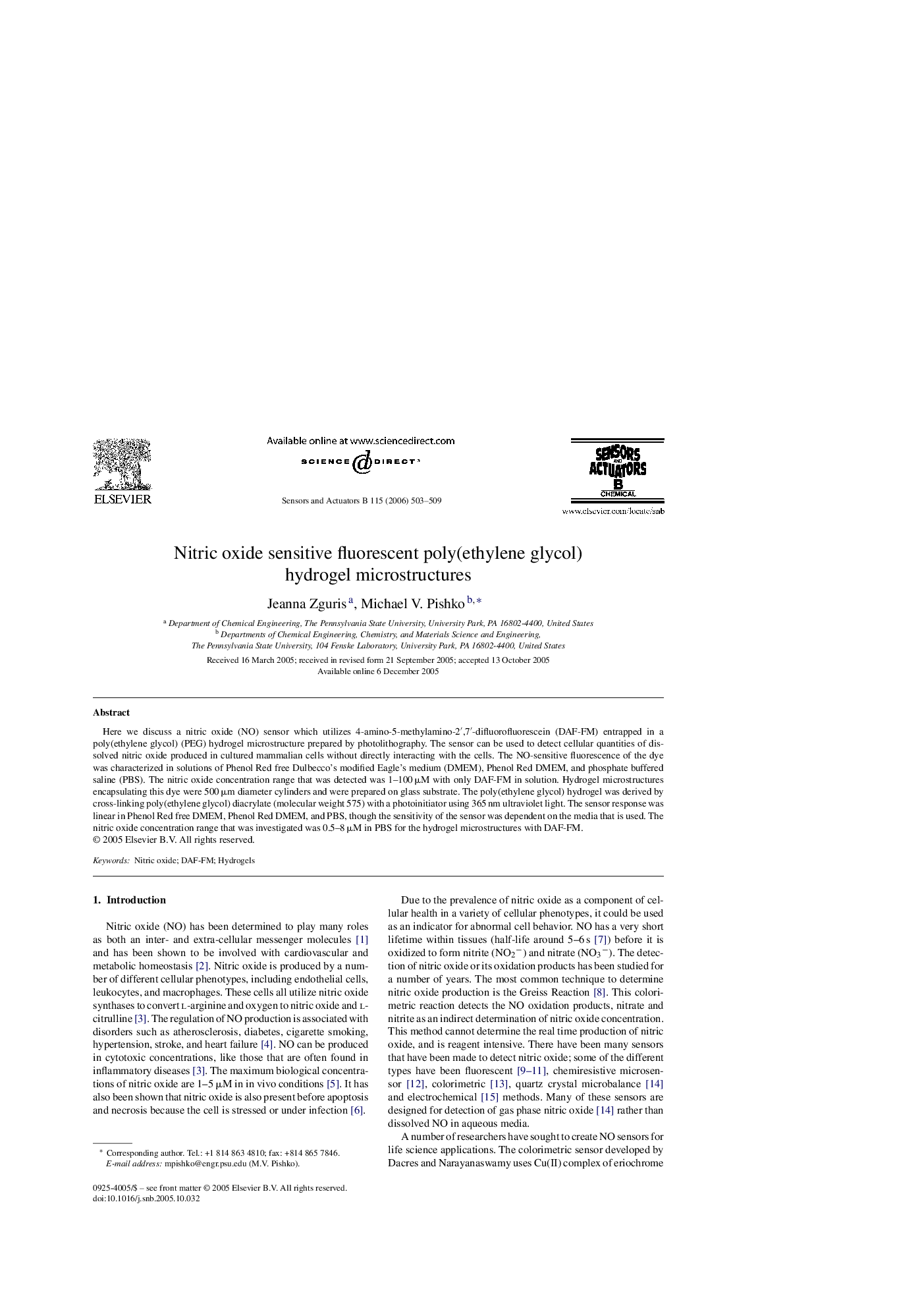| Article ID | Journal | Published Year | Pages | File Type |
|---|---|---|---|---|
| 747318 | Sensors and Actuators B: Chemical | 2006 | 7 Pages |
Here we discuss a nitric oxide (NO) sensor which utilizes 4-amino-5-methylamino-2′,7′-difluorofluorescein (DAF-FM) entrapped in a poly(ethylene glycol) (PEG) hydrogel microstructure prepared by photolithography. The sensor can be used to detect cellular quantities of dissolved nitric oxide produced in cultured mammalian cells without directly interacting with the cells. The NO-sensitive fluorescence of the dye was characterized in solutions of Phenol Red free Dulbecco's modified Eagle's medium (DMEM), Phenol Red DMEM, and phosphate buffered saline (PBS). The nitric oxide concentration range that was detected was 1–100 μM with only DAF-FM in solution. Hydrogel microstructures encapsulating this dye were 500 μm diameter cylinders and were prepared on glass substrate. The poly(ethylene glycol) hydrogel was derived by cross-linking poly(ethylene glycol) diacrylate (molecular weight 575) with a photoinitiator using 365 nm ultraviolet light. The sensor response was linear in Phenol Red free DMEM, Phenol Red DMEM, and PBS, though the sensitivity of the sensor was dependent on the media that is used. The nitric oxide concentration range that was investigated was 0.5–8 μM in PBS for the hydrogel microstructures with DAF-FM.
